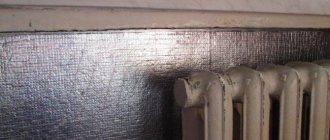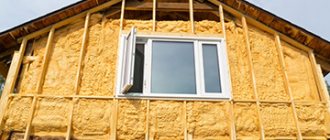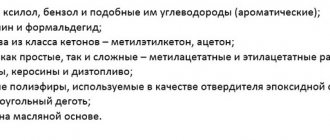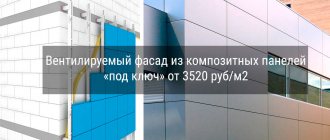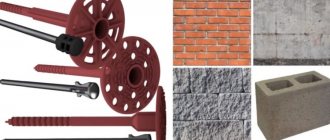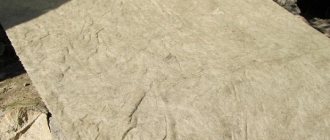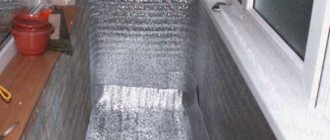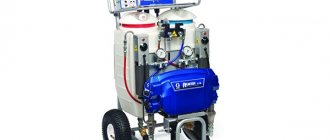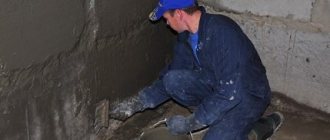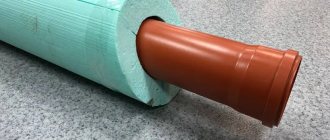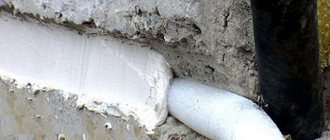To insulate the premises of construction sites, pipelines, ventilation ducts of engineering communications, both flammable and non-flammable insulation materials of various types are used.
The definition of non-flammable fire-resistant insulation is given by GOST 30244-94, which indicates that such a material, when exposed to an ignition source, burns with an open fire for no more than 10 s, and when tested in a laboratory oven loses no more than 50% of its mass, creating a temperature increase in it of no more than 50 ℃.
All insulation materials that do not satisfy at least one of the listed conditions are classified as flammable, non-fire-resistant materials.
Types of Fire Resistant Thermal Insulation Products
Kinds
Unlike combustible types of insulation, such as sawdust, mats made from wood processing waste, used due to their rapid destruction under the influence of moisture only inside buildings, many types of fire-resistant thermal insulation materials are also used when installing curtain wall systems, in external wall panels outside construction sites.
On this topic ▼
Non-flammable substances and materials
Classification and applications
There are several main types of fire-resistant insulation, divided depending on their area of application:
- For walls , floors of both wooden houses and construction sites built from brick, ceramic blocks, ready-made reinforced concrete, monolithic structures, including those made of fire-resistant (fire-resistant) concrete. In such cases, both traditional mineral wool and more modern fire-retardant basalt material, which does not absorb moisture and is non-flammable, are used in the form of rolls, mats, and slabs.
- For chimneys non-flammable foil material made from various types of mineral wool is most often used And also due to the increased density of non-flammable insulation, used for these purposes as filling the thermal insulation areas of the floors adjacent to the chimneys; elements of fire-fighting cuttings, indentation.
- For thermal insulation , fire protection of metal structures of ventilation air ducts; sections of pipeline networks, both transporting coolants, including water, and flammable liquids, gas mixtures.
- For an engine , motor vehicle, railway vehicle, river/sea vessel/ship, stationary heat-generating, electricity-generating installations, both to limit the consumption of thermal energy, heating of adjacent structures, compartments, and as a reliable sound insulation, cutting off loud noise from operating machines and mechanisms.
- For filling internal voids in the construction of fire partitions, fire-resistant gates, doors, hatches, used to protect openings in construction barriers to fire and smoke flows, which makes it possible to increase their fire resistance to the values required by fire safety standards.
This division into types is quite arbitrary, because most roll, slab, sheet fire-resistant insulation, in contrast to bulk, liquid foaming heat-insulating materials that are not subject to combustion, can be used for thermal and sound insulation of both the premises of construction sites, areas of their utility lines, and engine compartments of vehicles, heat and power generating units.
Rating of the best fire-resistant insulation materials
TechnoNIKOL Technoacoustic
A good model that is suitable for insulating ceilings and floors. The main element in the composition is basalt. Sold in slabs of 12 pieces per pack. You can find smaller or larger quantities. The product belongs to the NG category, which means that it is not subject to fire and will begin to melt at high temperatures. The service life of this material is 50 years. In addition to excellent temperature resistance, the material does not transmit sound. Also, metallurgical slags are often included in the composition of wool, which increases its effectiveness.
Sold at a price of 1,200 rubles for 12 pieces.
TechnoNIKOL Technoacoustic
Advantages:
- Resistance to high temperatures;
- Wide range of applications;
- Price;
- Workmanship;
- Convenient form factor.
Flaws:
- Not resistant to moisture.
P-600-450-150-1
Foam glass is an excellent option for equipping industrial buildings with thermal insulation. In appearance, the material resembles frozen bubbles with a porous surface. Production is carried out using the method of sintering glass elements with coal. The product is highly resistant to various temperatures, which makes it possible to use it in many fire-hazardous places.
The average cost is 20,000 rubles per cubic meter.
foam glass thermal insulation P-600-450-150-1
Advantages:
- Shows high resistance to temperatures;
- When melting, it does not emit toxic substances;
- Safety;
- Durability (100 years);
- Easy installation;
- Simple processing.
Flaws:
- Large mass, so it is recommended to place the insulation in basements;
- High price.
Expanded vermiculite
The material is perfect for carrying out various construction and repair work on insulating a house with a fire-resistant substance. It is obtained by firing natural hydromicas. It is a granular substance that shows high resistance to harmful microorganisms and temperatures. Most often it is used in the construction of small low-rise buildings, because there it shows the greatest efficiency.
Acceptable operating temperatures at which expanded vermiculite does not lose its properties vary from -256 to +1100 degrees Celsius. In addition to excellent fire-resistant properties, the product has a positive effect on the soundproofing characteristics of walls.
The average cost is 1,000 rubles per bag.
Expanded vermiculite
Advantages:
- High efficiency;
- Wide scope of application;
- Natural composition, which affects the safety of the human body;
- Price;
- Withstands mechanical stress.
Flaws:
- Poor resistance to moisture.
Perlite M-75
This is an excellent choice for those who are going to insulate their home for a long time. The main element of the composition is obsidian hydroxide granules. The main advantage of this option is low weight, as well as high thermal insulation. Suitable for insulating outbuildings and roofs with any slope, which is a big advantage. This product is also used to fill voids in wall masonry. It is highly resistant to record temperatures, and when melted it does not emit any pungent odors that can harm humans or nature.
Sold at a price of 3,600 rubles per cubic meter. m.
Perlite M-75
Advantages:
- Safety;
- Fluidity, this allows the material to completely fill the voids;
- Inorganic;
- Withstands temperatures over 1000 degrees;
- Soundproofing;
- Cost-effective;
- High performance indicator.
Flaws:
- Weak resistance to mechanical stress;
- Absorbs moisture.
SILCA 250KM
These are lightweight calcium silicate boards that are highly resistant to high temperatures and have excellent performance properties. They can be used in domestic ovens where a reducing atmosphere is present. Such slabs are more often used for the back layer of lining.
Sold at price: 1,700 rubles per piece.
SILCA 250KM
Advantages:
- Withstands temperatures up to 1100 degrees;
- Provides excellent protection for ovens;
- Safe materials are used in production;
- Hard surface;
- Reliability.
Flaws:
- Not detected.
Composition and properties
The main parameters of fire-resistant heat-insulating materials are:
- The material of manufacture, in most cases, determines the type of fire-resistant insulation, methods of its use at construction sites and utility lines.
- The thickness of commercial fire-resistant insulation, which depends both on the area of their application - for insulating certain types of building structures or sections of pipelines, ventilation ducts, and on the properties of the base material used for their production.
- Density, specific gravity, which determine the total load on building structures, which is often critically important for interfloor floors of residential and public buildings.
The list of main materials used in the industrial production of non-flammable, fire-resistant heat-insulating products includes the following natural, artificially obtained substances:
- Mineral wool, also called slag wool, glass wool, which is obtained from quartz sand, waste from metallurgy and energy facilities. This is the longest-used material, low cost, but requires protective equipment for workers laying it; caution when handling it due to the risk of damage to the skin, eyes, and respiratory organs.
- Basalt heat-insulating, fire-retardant material obtained by melting the natural mineral basalt, producing ultra-thin non-combustible fibers from it. The higher cost of this fire-resistant insulation is compensated by the safety of its handling and the ability to use it both inside and outside construction sites in regions of different climates, including those with high air humidity.
- Foam glass obtained by sintering a mixture of crushed glass scrap, crumbs and coal as a gas-forming agent in the production process. The resulting material is absolutely non-flammable, has a high fire resistance limit, and a low thermal conductivity coefficient. It is often used for thermal insulation of rooms with high environmental humidity, for example, basements, technical undergrounds, production areas with wet technological processes.
- Expanded clay, vermiculite, perlite - this trio of bulk materials has long been used for thermal insulation of interfloor ceilings, attics, and serves as an additive to “warm” floor screeds in residential and public buildings.
- Velite is a modern non-flammable insulation with a porous structure, which is produced from cement-lime raw materials by foaming it. In terms of structure and properties, it belongs to porous fire-resistant concrete, having a low density - up to 140 kg/m3, since up to 90% of its internal volume is air.
- Glass pore is a granular fire-resistant material obtained in the process of swelling of silicates as a result of sharp cooling of the molten sodium and potassium glasses. Most often, it is used not in the form of bulk material, but as an additive to the poured thermal insulation of interfloor ceilings of construction projects, as well as in the production of piece-piece fire-resistant thermal insulation products.
- Fire-resistant foam produced on the basis of liquid polyurethane with additives of flame retardant substances, giving it fire-retardant properties.
As you can easily see, non-flammable insulation is mainly produced on the basis of natural, artificial materials of mineral and inorganic origin, which are initially non-flammable.
On this topic ▼
Fireproof pastes
Types and order of application
Such thermal insulation products have fire safety certificates, where their combustion ability is indicated as NG, that is, non-flammable, while the vast majority of insulation products obtained at organic chemical synthesis enterprises, for example, various types of foam plastics, penoizols; “ecological wool” based on recycled cellulose secondary raw materials with additives of fire retardants are, at best, flame retardant and are marked G1.
Naturally, such insulation, despite the advertising assurances of some manufacturers and representatives of trade organizations, in no way can claim the “title” of fire-resistant insulation.
Properties additionally required by customers - designers, builders, organizations operating buildings, engineering structures, communications, which a fire-resistant non-combustible material, which is used as a fire-resistant insulation, must have:
- Low thermal conductivity, resulting in high thermal insulation parameters.
- Moisture resistance, hygroscopicity.
- The ability to reliably sound insulate walls, partitions, and ceilings that separate the protected premises.
- Safety of use, absence of release of volatile substances hazardous to humans both under normal operating conditions and under strong heating, including in the event of a fire inside a construction site where fire-resistant insulation is used for insulation and sound insulation.
- High density with relatively low specific gravity.
- Mechanical strength.
- Constancy of geometric dimensions, durability of operation without loss of fire-resistant, heat-insulating parameters.
- Low cost, which is especially important for owners and customers of the construction of private wooden houses.
- Simplicity of installation work, laying fire-resistant insulation, including without hiring third-party specialists.
Liquid fire retardant insulation
These synthetic building materials are characterized by high thermal insulation parameters. Among them there are many modifications that are non-flammable and environmentally friendly. For example, polyurethane. Liquid fillers fill the smallest cracks, completely preventing cold from entering the premises.
Advantages:
- efficiency;
- environmental Safety;
- fire resistance;
- filling density.
Flaws:
- application requires special equipment and skills;
- high price.
Application of liquid polyurethane
Classification
Non-flammable fire-resistant insulation is often classified according to its state of aggregation, appearance, internal structure, depending on which it can be:
- Frame , including multilayer, reinforced with non-combustible materials, often used as elements of structural fire protection of load-bearing metal structures of construction projects.
- Rolled , which allows you to wrap it around elements of building structures of various shapes and cross-sections, as well as sections of pipelines and ventilation ducts that need to be protected from freezing and possible exposure to fire in the event of a fire.
- Slab , as well as in the form of separate heat-insulating mats, specially developed by designers and manufacturers of standard sizes, which facilitates their installation and installation inside building structures, for example, partitions between rooms.
- Loose , including artificially expanded, cellular, which significantly increases its thermal insulation properties.
- Liquid foaming material that hardens during polymerization and drying after application to building structures, sections of pipeline networks, ventilation systems of protection facilities, most often called fire-resistant foam.
The choice of one or another class of non-combustible, fire-resistant insulation is determined both by design solutions and experience of use in civil and industrial construction during the construction and repair of various objects.
| Slab fire-resistant insulation | Foil fire-resistant insulation for chimneys of stove pipes |
| Stitched foil fire-resistant insulation | Fire resistant mineral wool |
Varieties
There are hundreds of types of thermal insulation materials on sale. They differ not only in purpose - fire-resistant insulation for a chimney, for a foundation, for a roof, but also in structure:
- Bulk. These insulators are granules and pebbles of various fractions. Building materials are poured into the voids of building structures. Expanded clay, perlite and vermiculite are well known.
- Cellular. Foam materials are widely used in house construction. They have good performance parameters. For example, foam glass is extremely durable, and the declared resource is 100 years.
- Liquid. These heat insulators are applied to structures in liquid form. After hardening, they turn into a white mass, similar in appearance to foam plastic. A popular liquid heat insulator is polyurethane foam.
- Fibrous. Insulation materials consist of fibers, building materials are often called wool: stone, mineral, basalt. They are offered on the market in mats or rolls. Traditional solution with high fire resistance.
Basalt wool
Regulations
The following norms and standards are directly related to the production, certification testing of serial products, fire-resistant heat-insulating materials, and the possibility of their use to reduce the fire danger of protected objects:
On this topic ▼
Fire retardant plaster
Types for structures and applications
- GOST 4640-2011 on the production of mineral wool - the source material for the production of fire-resistant insulation, capable of operation in the temperature range - 180 to 700℃.
- GOST 21880-2011 on the technology of manufacturing pierced fire-resistant mats from mineral wool.
- GOST 32313-2011 – the same about frame slabs, mats, foil cylinders made of mineral wool that can withstand temperatures up to 1000℃.
- GOST 32314-2012 – on the types of fire-resistant insulation materials produced from different types of mineral wool used in the construction of construction projects.
- GOST 30244-94 – about flammability tests. The standard is not applicable to those classes of non-combustible insulation materials that are produced in the form of granules or ready-made liquid solutions.
- NPB 244-97 – on the fire hazard parameters of thermal insulation materials.
And also SP 112.13330.2011 - on fire protection of construction sites, SP 4.13130.2013 - on limiting the development of fire inside protected objects, SP 2.13130.2012 - on ensuring their resistance to fire, regarding the use of fire-resistant insulation in the design, construction of fire barriers, and manufacturing fire-resistant filling of openings in them; a general reduction in the fire hazard of buildings and structures as a result of the use of non-combustible types of insulation.
Application area
Fire-resistant non-combustible insulation is used in the construction, major repairs, reconstruction of various types, the purpose of construction projects - from private outbuildings, residential and country houses to high-rise public and residential buildings; production workshops, warehouse complexes.
Due to the moisture resistance and non-susceptibility to biological destruction of most types of fire-resistant heat-insulating materials, they are used with a guarantee of a long service life when installed outside the enclosing structures of construction projects; inside, including in rooms with high humidity, which have explosion and fire hazard categories.
Bulk insulation for walls, ceilings and floors
Each bulk non-flammable insulation for walls and ceilings has its own thermal conductivity parameters. When using, you need to accurately calculate the thickness of the backfill. This method of insulation is complex, both in design development and execution. Building materials vary in environmental safety; some release toxic substances when heated. But all of them are ideally non-flammable and fire-resistant.
Advantages:
- good thermal insulation parameters;
- does not attract animals;
- fire resistance;
- low cost.
Flaws:
- require precise calculations and site preparation;
- Some modifications emit hazardous substances at high temperatures.
Ceiling insulation with expanded clay
Advantages and disadvantages
In addition to the obvious reduction in the fire danger of construction sites, the use of fire-resistant insulation provides other advantages:
- The service life of many building structures, for example, partitions and ceilings, is increased without the need to open them to replace worn-out insulation made from organic materials.
- Longer, safer operation of sections of engineering networks, life support communications of objects protected by fire-resistant insulation, including those passing through fire-hazardous production and warehouse premises.
- The use of fire-resistant heat-insulating materials sharply reduces the possibility of a fire from furnace equipment.
The only disadvantages include the somewhat inflated cost of certain brands of fire-resistant insulation, however, given the huge supply of products with similar technical parameters on the market, this is not a problem for customers and buyers.
Why do you need non-combustible insulation and what to pay attention to
Fire-resistant thermal insulation is necessary for every home because it is not only able to insulate the building from the effects of low temperatures, but also provides safety to the user. This reduces the chance of an accidental fire to 0%. If previously such insulation materials were new, in 2021 there are hundreds of models on the market that are suitable for household stoves, fireplaces, chimneys, baths, while their efficiency remains at a high level.
Oxygen index
The first selection criterion is the oxygen index. The characteristic indicates the minimum amount of oxygen that is present per unit volume of thermal insulation. In total, there are three types of insulation, which differ in flammability threshold:
- 40%. This category includes composite polymers;
- 31%. Glass wool, basalt wool and other fibrous and cellular thermal insulation;
- 20%. It is worth knowing that such products burn well in air, so their use is unacceptable in fire hazardous areas.
Peculiarities
When choosing a fire-resistant heat-insulating substance, it must have the following parameters:
- Burning with a visible flame is permitted, but must not last longer than 10 seconds. This will prevent the fire from spreading to other areas, which will prevent a large fire from starting.
- When burning, the maximum temperature of the material used should not rise above 50 degrees.
- In addition, it is important that the thermal insulation does not lose half of its volume and mass during combustion.
If all these points are met, then the user can be confident in the selected material, because it will never let him down.
